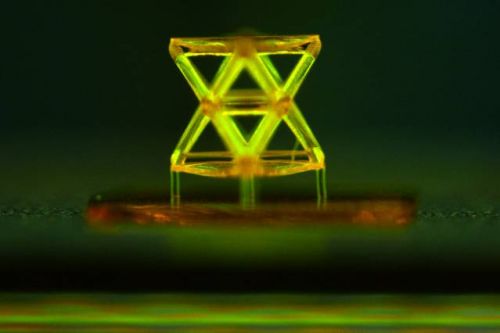3D-Printed Material Can Carry 160,000 Times Its Own Weight
What’s the difference between the Eiffel Tower and the Washington Monument?
Both structures soar to impressive heights, and each was the world’s tallest building when completed. But the Washington Monument is a massive stone structure, while the Eiffel Tower achieves similar strength using a lattice of steel beams and struts that is mostly open air, gaining its strength from the geometric arrangement of those elements.
Now engineers at MIT and Lawrence Livermore National Laboratory (LLNL) have devised a way to translate that airy, yet remarkably strong, structure down to the microscale – designing a system that could be fabricated from a variety of materials, such as metals or polymers, and that may set new records for stiffness for a given weight.
The new design is based on the use of microlattices with nanoscale features, combining great stiffness and strength with ultralow density.
The actual production of such materials is made possible by a high-precision 3D printing process called projection microstereolithography.
Read More:
Researchers Develop Incredibly Strong 3D Printed Microlattices (3dprint.com)
New ultrastiff, ultralight material developed (MIT.edu)
Using light to imprint features onto polymer or plastic, Associate Professor Nick Fang’s research led his team to disprove the established diffraction limit, proving for the first time that it is possible to print sub-wavelength features one-hundredth the thickness of a human hair. His discovery allows manufacturers to imprint finer features into items such as DVDs to significantly improve storage capabilities, or to probe the traffic of protein or DNA.

| Tweet |











